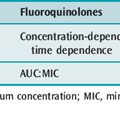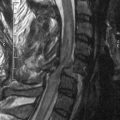Chapter 7 Ethics in intensive care
DEFINITION
Ethics is the study of how one ought to behave. In contrast, the law defines how one must behave to avoid punishment. Ethics is concerned with differentiating right from wrong behaviour. For most people, a sense of ethics is innate. Medical ethics particularly relates to the relationships between health care practitioners and patients and is not limited to doctors even if it is particularly applicable to doctors. Ethical conflict almost always involves a clash of values and appropriate resolution depends on recognition of the conflicting interests and values.
ETHICAL FRAMEWORK
ICU ETHICAL PROBLEMS
END-OF-LIFE MANAGEMENT
During its relatively brief history, intensive care has seen a dramatic increase in both capacity and capability. Practice has become codified and at least partly standardised and intensive care is more generally accessible. Greater emphasis on individual rights has seen an increased demand for medical resources in general and this has flowed on to intensive care. The great challenge for intensive care lies in the reality that prolonged life support is often quite easily achieved without there being either inevitable recovery or intractable demise. Of the sickest patients in the intensive care unit (ICU), only a proportion ultimately recovers and can be returned to a reasonable quality of life. Even this would not be a problem if it were possible to predict survival with any degree of certainty and a great deal of effort has been expended in an attempt to achieve this. Unfortunately, this has met with only limited success and consideration of the appropriateness of ongoing intensive care is necessarily conducted against a background of prognostic uncertainty.1
In consequence of this, death in ICU usually involves some limitation or withholding of life-sustaining treatment.2,3 This has now been well documented in many studies from around the world and the driving factors are now reasonably well understood.2–9 The ethical principles underpinning this practice are those described above. Intensive care is inevitably burdensome and requires a commensurate benefit to conform to beneficence and non-maleficence. While life itself has a value, this is considerably offset if it is brief, painful and non-interactive. As death becomes increasingly imminent, its deferment at any cost becomes less appropriate. Considerations of justice should rarely intrude at the bedside. However, prolongation of life by artificial means in a patient with little or no chance of survival may challenge the rights of survivable patients to limited intensive care resources.10 Where resources are publicly owned, offering to one patient treatment that cannot be made available to all patients in similar circumstances is fundamentally unethical. The collective has the ethical right to regulate access to even beneficial therapy provided it does so in a non-discriminatory fashion. The intensive care specialist does not have a right unilaterally to apply or withhold resources against the will of the collective. Unfortunately, the will of the collective is rarely known.
End-of-life management in the intensive care setting has been subjected to a considerable research endeavour over the past several years.2,4,11–13 Insights that can be gleaned from published studies include:
PRACTICAL CONSIDERATIONS
ADVANCE DIRECTIVES AND POWER OF ATTORNEY
Patients may formally signal their preferences for end-of-life care in a written document or may nominate a surrogate decision-maker in the event of future incompetence. The legal standing of such documents is highly variable. Nevertheless, as expressions of self-determination they have considerable ethical validity and warrant respect. Unfortunately, advance directives are often insufficiently specific and it is not always possible to be sure that decisions included in such documents were fully informed and rational. Given the frequent reticence of patients to consider end-of-life matters,14 advance directives are unlikely to become widely pervasive.
EUTHANASIA
This term is strictly applicable only to situations of active termination of life with the knowledge of and usually at the request of a patient suffering a terminal and/or debilitating, incurable illness. Physician-assisted suicide is a variation of this practice. This is a subject of considerable debate and is now legal in a small number of jurisdictions though likely practised surreptitiously in many more. Ethicists, largely on consequentialist grounds, maintain no distinction between this and the terminal withdrawal or withholding of treatment18 (sometimes inappropriately termed ‘passive euthanasia’). For intensive care practice, however, the distinction seems obvious and essential. The distinction is most often argued on the basis of intent. Although there may well be a difference in intent between active euthanasia and withdrawal of treatment, relief of pain and suffering may be at the heart of both activities. Even if this is the case, active euthanasia is certainly a disproportionate means to the end. Treatment limitation is arguably an essential component of intensive care practice while euthanasia is not and there is usually a clear and obvious difference in the acts themselves. While it may be true that in some instances there is no moral distinction between euthanasia and withdrawal of treatment, this does not mean that there is never such a distinction.
TREATMENT WITHDRAWAL
CONSENT
Because intensive care patients are often unable to provide formal consent and because critical illness itself may negate the preconditions for consent, this issue is commonly neglected. Consent to ‘routine’ or everyday procedures in critically ill patients is often presumed or rather subsumed under the general consent to treatment. Near-universal consent is possible, however.19 The precise role for consent in the intensive care context has not been fully defined but deviations from the general requirement for consent require some justification. The legal requirement for consent varies with different interpretations and jurisdictions. If taken to extreme, such as enabling surrogate refusal for ‘routine’ procedures such as central venous access, consent-related autonomy may become incompatible with the beneficence and non-maleficence principles and may largely become untenable.
PROFESSIONALISM
Among the ethical responsibilities of medical practitioners are:
INDUSTRY AND CONFLICT OF INTEREST
Relationships among doctors and the medical technology and pharmaceutical companies are complex.20 Doctors and industry are somewhat interdependent. Medical advances do not occur in a vacuum and the invention, assessment, development and marketing of new drugs and technologies necessitate close relationships among doctors and industry. While doctors are entitled to fair consideration for their skills and effort, the relationships must be overt and openly scrutinised if conflicts of interests are not to occur. The nature of the rewards offered by companies for medical involvement in product development is diverse but includes both direct and indirect payments. The economic justification for all these payments depends on their effects on subsequent product marketing. The propriety of travel and related support is questionable unless it is directly and attributably related to openly contracted services. Involvement of companies with vested interests in pseudoeducational initiatives and even guideline development may be little more than covert marketing.21 Some open labelled research initiatives with large, practitioner reward programmes are similarly worrisome. Initiatives designed to limit these conflicts of interest include open disclosure of all financial relationships and voluntary and involuntary codes of conduct on both sides of the relationship. Financial inducements can be easily concealed, however, and specific financial relationships can be obscured by their volume and pervasiveness. Although this potential for ethical conflict exists in many other commercial relationships, the nature of medicine and the associated expenditure of, often, public funds dictate that this is not an entirely private consideration.
RESEARCH
Critically ill patients can rarely consent themselves to participation in research projects and yet they are able to benefit from the results of earlier studies with similarly problematic consent issues. Locating surrogate decision-makers within a timeframe appropriate for some types of research can also be impossible. This has been recognised and enacted in a consent waiver for even randomised clinical trials. The potential ethical conflict in this situation lies in the use of a patient as an instrument to achieve another’s end without express consent. There is a potential ‘slippery slope’ in valuing the rights of the collective over those of the individual and yet the individual can be seen to have an interest in the resolution of some of these important clinical questions. The conduct of such research must be carefully scrutinised by outside agents and careful consideration must be given to the balance between risk and benefit. A potentially greater benefit might help justify a potentially greater risk even if the benefit might not be directly applicable to the subject. Studies of, for example, disease mechanisms involving little or no potential direct patient benefit would need to involve no material risk. In general, the principles of consent detailed above are applicable. When a waiver is applied, patients and/or surrogates should be afforded an opportunity to withdraw from study at the earliest opportunity.
1 Logan RL, Scott PJ. Uncertainty in clinical practice: implications for quality and costs of health care. Lancet. 1996;347:595-598.
2 Sprung CL, Cohen SL, Sjokvist P, et al. End-of-life practices in European intensive care units. The Ethicus study. JAMA. 2003;290:790-797.
3 Prendergast TJ, Luce JM. Increasing incidence of withholding and withdrawing of life support from the critically ill. Am J Respir Crit Care Med. 1997;155:15-20. 15–20
4 Cook D, Rocker G, Marshall J, et al. Level of care study investigators and the Canadian critical care trials group. Withdrawal of mechanical ventilation in anticipation of death in the intensive care unit. N Engl J Med. 2003;349:1123-1132.
5 Hamel MB, Teno JM, Goldman L, et al. Patient age and decisions to withhold life-sustaining treatments from seriously ill, hospitalized adults. SUPPORT investigators. Study to Understand Prognoses and Preferences for outcomes and Risks of Treatment. Ann Intern Med. 1999;130:116-125.
6 Phillips RS, Hamel MB, Teno JM, et al. Patient race and decisions to withhold or withdraw life-sustaining treatments for seriously ill hospitalized adults. SUPPORT investigators. Study to Understand Prognoses and Preferences for Outcomes and Risks of Treatments. Am J Med. 2000;108:14-19.
7 Kolleff M. Private attending physician status and the withdrawal of life-sustaining interventions in a medical intensive care unit population. Crit Care Med. 1996;24:968-975.
8 Fisher M. An international perspective on dying in the ICU. In: Curtis JR, Rubenfeld GD, editors. Managing Death in the ICU. New York: Oxford University Press; 2001:273-288.
9 Fisher MM, Raper RF. Withdrawing and withholding treatment in intensive care. Med J Aust. 1990;153:217-229.
10 Fisher M, Raper RF. Delay in stopping treatment can become unreasonable and unfair. Br Med J. 2000;320:1268-1269.
11 Faber-Lagendorf K, Bartels DM. Process of foregoing life-sustaining treatment in a university hospital: an empirical study. Crit Care Med. 1996;24:968-975.
12 The SUPPORT investigators. A controlled trial to improve care for seriously ill, hospitalized patients. The Study to Understand Prognoses and references for Outcomes and Risks of Treatment (SUPPORT). JAMA. 1995;274:1591-1598.
13 Angus DC, Barnato AE, Linde-Zwirble WT, et al. Use of intensive care at the end of life in the United States: an epidemiologic study. Crit Care Med. 2004;32:638-643.
14 Heyland DK, Frank C, Groll D, et al. Understanding cardiopulmonary resuscitation decision making: perspectives of seriously ill hospitalised patients and family members. Chest. 2006;103:419-428.
15 Heyland DK, Rocker GM, O’Callaghan CJ, et al. Dying in the ICU: perspectives of family members. Chest. 2003;124:392-397.
16 Ferrand E, Robert R, Ingrand P, et al. Withholding and withdrawal of life support in intensive-care units in France: a prospective survey. French LATAREA group. Lancet. 2001;357:9-14.
17 Sjokvist P, Nilstun T, Svantesson M, et al. Withdrawal of life support-who should decide? Intens Care. 1999;25:949-954.
18 Rachels J. Active and passive euthanasia. N Engl J Med. 1975;292:78-80.
19 Davis N, Pohlman A, Gehlbach B, et al. Improving the process of informed consent in the critically ill. JAMA. 2003;289:1963-1968.
20 Gale EAM. Between two cultures: the expert clinician and the pharmaceutical industry. Clin Med. 2003;3:538-541.
21 Eichacker PQ, Natanson C, Danner RL. Surviving sepsis – practice guidelines, Marketing campaigns, and Eli Lilly. N Engl J Med. 2006;355:1640-1642.







